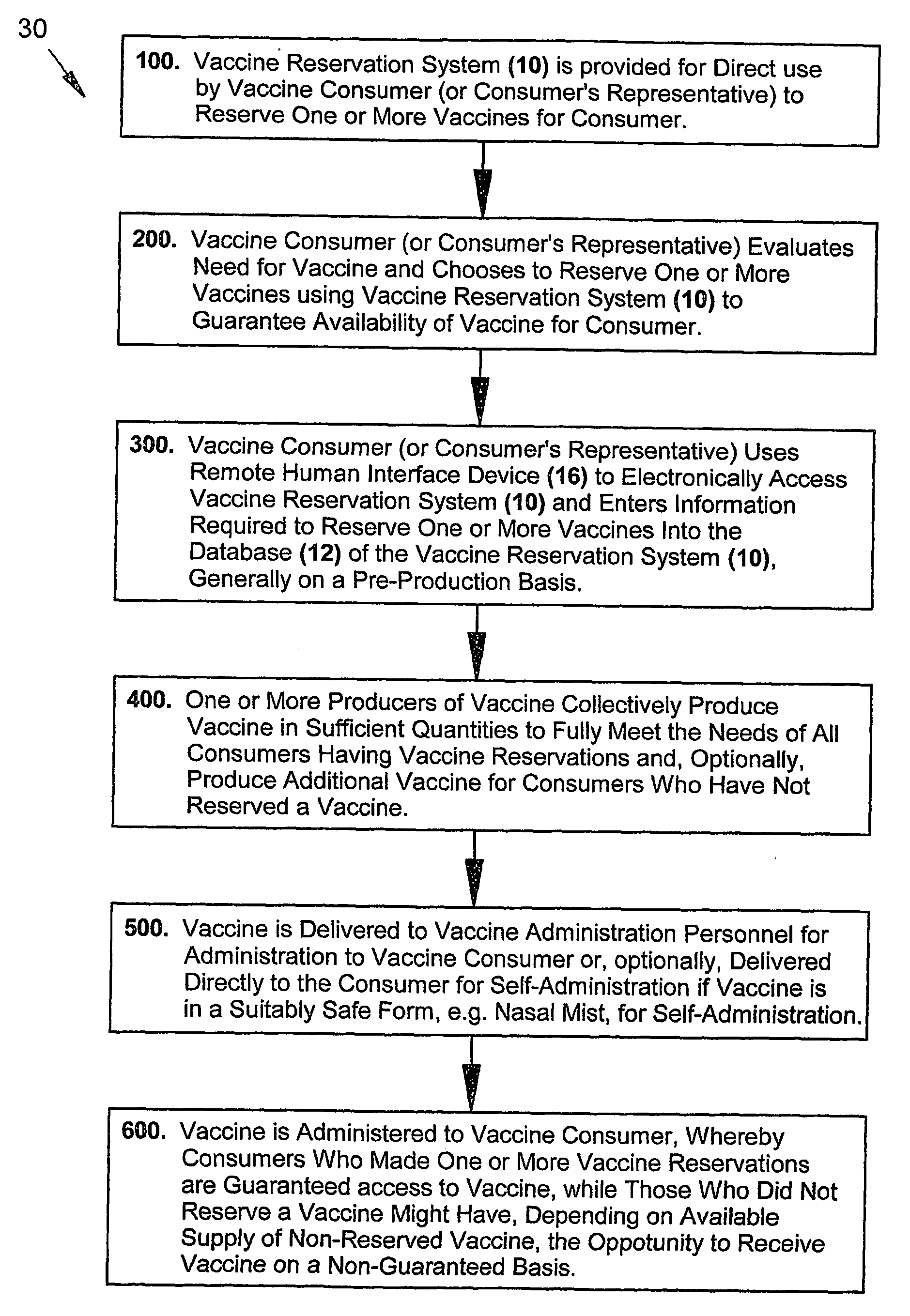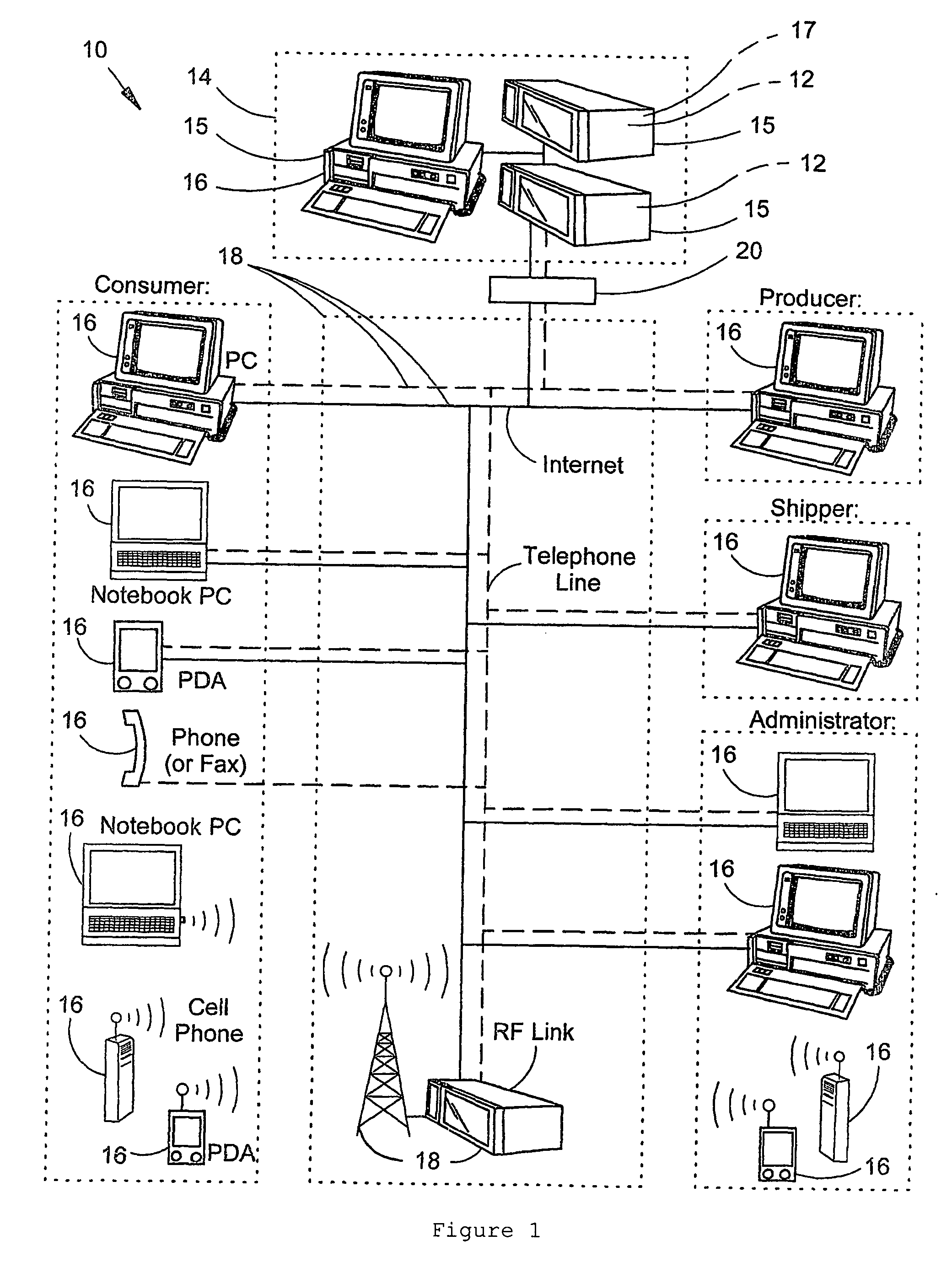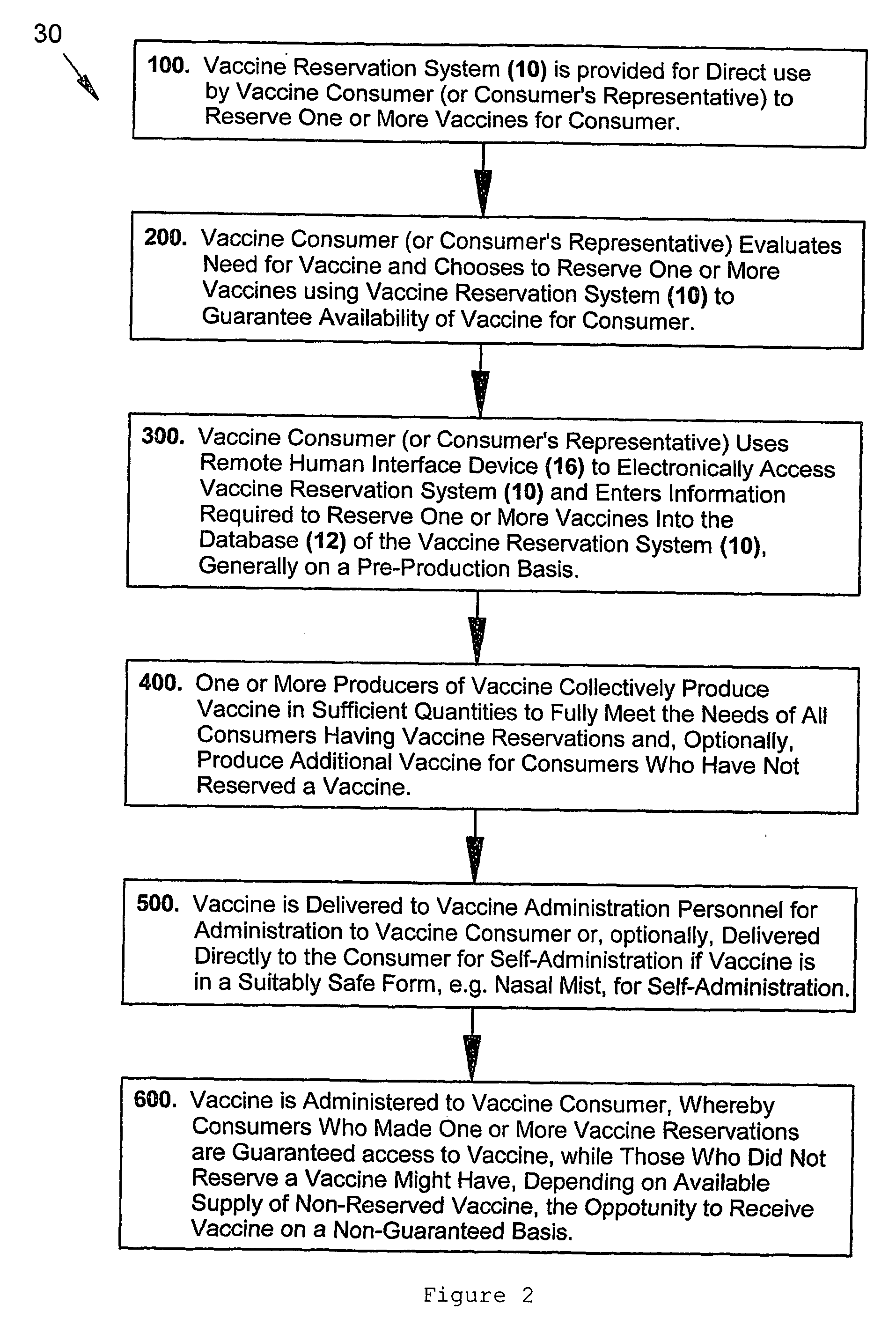However, all such methods of prior art typically attempt to match supply and demand by estimating or forecasting future demand for seasonal vaccine (and thus establish production and / or distribution quantities for seasonal vaccine) based largely on (1) the historical
consumer demand for similar vaccine during prior seasons and / or (2) the perceived or estimated relative seasonal pathogenic
threat during the upcoming season.
Nonetheless, a closer review of prior art (i.e., the commonly-known conventional operational practices within the healthcare industry for determining
vaccine production and / or distribution quantities) clearly reveals its many limitations.
Regarding the limitations of prior art, as previously noted, any forecast-based method for matching seasonal supply of vaccine with seasonal demand (i.e., determining adequate production and / or distribution quantities) generally entails a highly error-prone “compromise” between the two critically important, yet typically competing, simultaneous objectives of (1) ensuring full access to vaccine and (2) avoiding the expense and waste of gross
overproduction.
If such competing objectives are managed successfully for a given season, only a small amount of excess vaccine is produced, thereby resulting in limited waste.
However, as a result of the inherent difficulties in managing these competing objectives using such forecast-based methods of prior art (once again, the difficulty is due in large part to the lengthy process of
vaccine production, the highly variable and often fickle nature of consumer demand, and the variable and somewhat unpredictable nature of various pathogens), the forecast-based methods of prior art
expose both the consumers of vaccine and the producers of vaccine to considerable risk.
Further, as will be shown below, such long-established, industry-standard, forecast-based methods for matching seasonal supply of vaccine with seasonal demand have been (and remain) dangerously inaccurate.
Although the producers of vaccine working in concert with medical practitioners, governmental health agencies, and / or other organizations, are generally able to forecast with somewhat reasonable accuracy the consumer demand for a given year or season, major shortages (as well as excessive overproductions) of vaccine, nonetheless, can occur (and historically do occur) resulting in severe consequences.
As one example of the failings of forecast-based methods of prior art, first note that as a result of the unexpectedly
low demand for
influenza vaccine in the Unites States during the 2002-2003 “flu” season, many doses of vaccine went unused, thereby representing a significant financial loss to the producers of the vaccine and / or others within the healthcare industry.
As a second example of the failings of prior art, note that in response to the unexpectedly
low demand for flu vaccine during the 2002-2003 flu season, the producers of vaccine reduced production quantities for the 2003-2004 flu season based, in part, on the prior flu season's
low demand.
Unfortunately, the 2003-2004 flu season commenced early and with unusual severity, thereby causing (1) all readily available doses of vaccine to be consumed very early within the flu season and (2) a general shortage of vaccine in most regions of the country.
It is strongly emphasized that this shortage in vaccine supply resulted in unnecessary illness,
loss of life, loss of time at work and / or school, long waiting lines for
vaccine administration, rationing of vaccine by government and health care providers, general
panic or hysteria within certain susceptible sectors of the
population, and numerous other adverse consequences to society—all because the forecast-based methods of prior art for matching seasonal vaccine supply and seasonal vaccine demand were highly inaccurate for the given season.
Unfortunately, manufacturing difficulties (in particular, the
contamination of vaccine during production at one major producer) caused the irrecoverable loss of approximately half (or approximately 50 million doses) of the nation's flu vaccine supply for the 2004-2005 flu season.
Consequently, for the second consecutive flu season, severe shortages of flu vaccine existed throughout most regions of the country.
As might be expected, this shortage in vaccine supply resulted, once again, in unnecessary illness,
loss of life, loss of time at work and / or school, long waiting lines for
vaccine administration, rationing of vaccine by government and health care providers, general
panic or hysteria within certain susceptible sectors of the
population, and numerous other adverse consequences to society—all because the forecast-based methods of prior art for matching seasonal vaccine supply and seasonal vaccine demand were, once again, highly inaccurate for the given season.
Considering these examples, it is clearly evident that the current forecast-based methods of prior art for establishing
vaccine production quantities present very significant risks, both on the
supply side to producers, and on the
demand side to consumers.
However, under the methods of prior art, note that these persons currently have no means for ensuring that vaccine will be available to them, thereby placing their health at risk.
Further, such producers simply cannot afford to produce vaccine for all those who might want it: to do so would require the producers to produce several times (e.g., three to five times) the typical seasonal demand for vaccine, the vast majority of which would go unused.
Ultimately, such excess margin or
overproduction would, at least, be wasteful, if not financially damaging or devastating to the producers of vaccine and / or to the government health agencies (or other entities) securing the producer's investment.
In summary, the forecast-based methods of prior art for matching seasonal vaccine supply and seasonal vaccine demand represent numerous disadvantages, both to the vaccine consumer and to the vaccine provider.
1. Prior art fails to provide any effective means for substantially ensuring an individual consumer access to one or more seasonal vaccines (or to a particular medically-required type or form of vaccine), thereby seasonally exposing the intended vaccine consumer to unnecessary
risk of infection, illness, loss of work or income, other adverse consequences, and possibly death.
2. Prior art fails to provide any reliable means for accurately matching seasonal vaccine supply and demand (i.e., establishing accurate production and / or distribution quantities), often leading to significant overall and / or local imbalances between vaccine supply and demand.
In addition to possibly subjecting the involved parties to severe health and / or economic consequences, prior art also frequently forces personnel within the health care industry and / or government health agencies to implement contingency plans to manage a significant vaccine shortage and / or the consequences thereof.
3. Prior art fails to provide any effective means for capturing or securing production costs (or a proxy thereof) from the consumer (and / or the consumer's representative or agent) prior to
vaccine delivery and administration, thereby subjecting such producers and / or their financial underwriters (including governmental health agencies) to unnecessary financial risk.
4. Prior art fails to provide any effective means for accurately capturing or obtaining from consumers and providing to the vaccine producers geographical information regarding the intended vaccine consumers, thereby making accurate and timely geographical distribution of vaccine unnecessarily difficult.
Thus, the methods of prior art result in the possibility (and real occurrences) of local shortages and / or local oversupply, regardless of the overall balance between supply and demand.
5. Prior art fails to provide any effective means for prompting and / or incentivizing consumers to actually be vaccinated.
Additionally, other than by general medical appointments or
office visits, prior art provides no readily accessible means for scheduling a simple
vaccination, many of which are given outside the medical office (for example, in a
community school gymnasium, a local grocery store or
pharmacy, and the like), and therefore generally cannot effectively utilize the existing medical infrastructure for appointments.
6. Prior art fails to provide any effective means for post-
vaccination evaluation of one or more vaccines or other pharmacological agents.
7. Prior art fails to provide any effective means for allowing individuals or other benefactors to charitably gift or donate one or more vaccines to those in need of vaccine, but having insufficient financial means.
8. Prior art fails to provide any effective means for educating the vaccine consumer regarding (1) general and / or specific pathogenic risks or (2) vaccines which might be available to mitigate or eliminate such risks.
In addition, prior art fails to provide to the vaccine consumer any effective means for planning or managing personal vaccinations over time.
 Login to View More
Login to View More  Login to View More
Login to View More 


